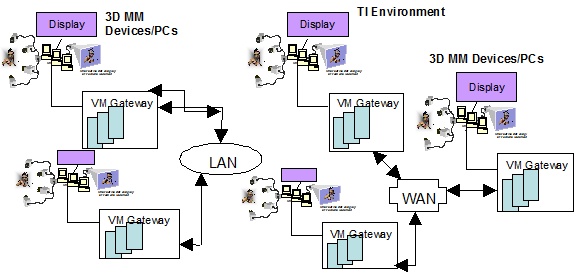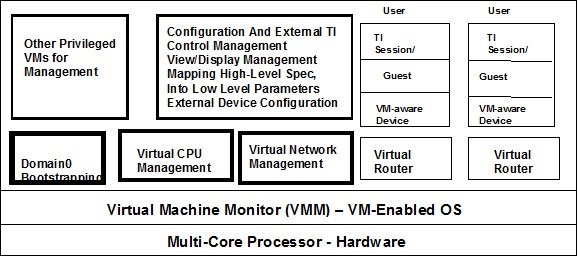Architecture Overview
The H-Media architecture is designed as an extensive open framework of configurable components that provide layered support for multi-room TI capture, transmission and display. As shown in the image below, the H-MEDIA architecture consists of 3D multimedia sensing devices; algorithms that reconstruct, locate, fuse and render the multi-stream information into coherent TI displays and streaming interconnections among the multimedia devices

The H-MEDIA framework relies on distributed gateways to create the real-time distributed virtualized environment and support multiple TI rooms. The H-MEDIA gateway architecture consists of various Virtual Machines (VM) running on top a VMM. These VMs can be categorized in two: Privileged Management VMs and User/Application-inclusive Multi-stream supporting VMs. As shown in the figure below the Privileged VMs perform the following tasks: Bootstrapping, Virtual Real-time CPU Management, Virtual Network Management and Configuration Management. The User VMs include the guest Operating System, device drivers and user applications necessary to support multi-streaming within one room.
